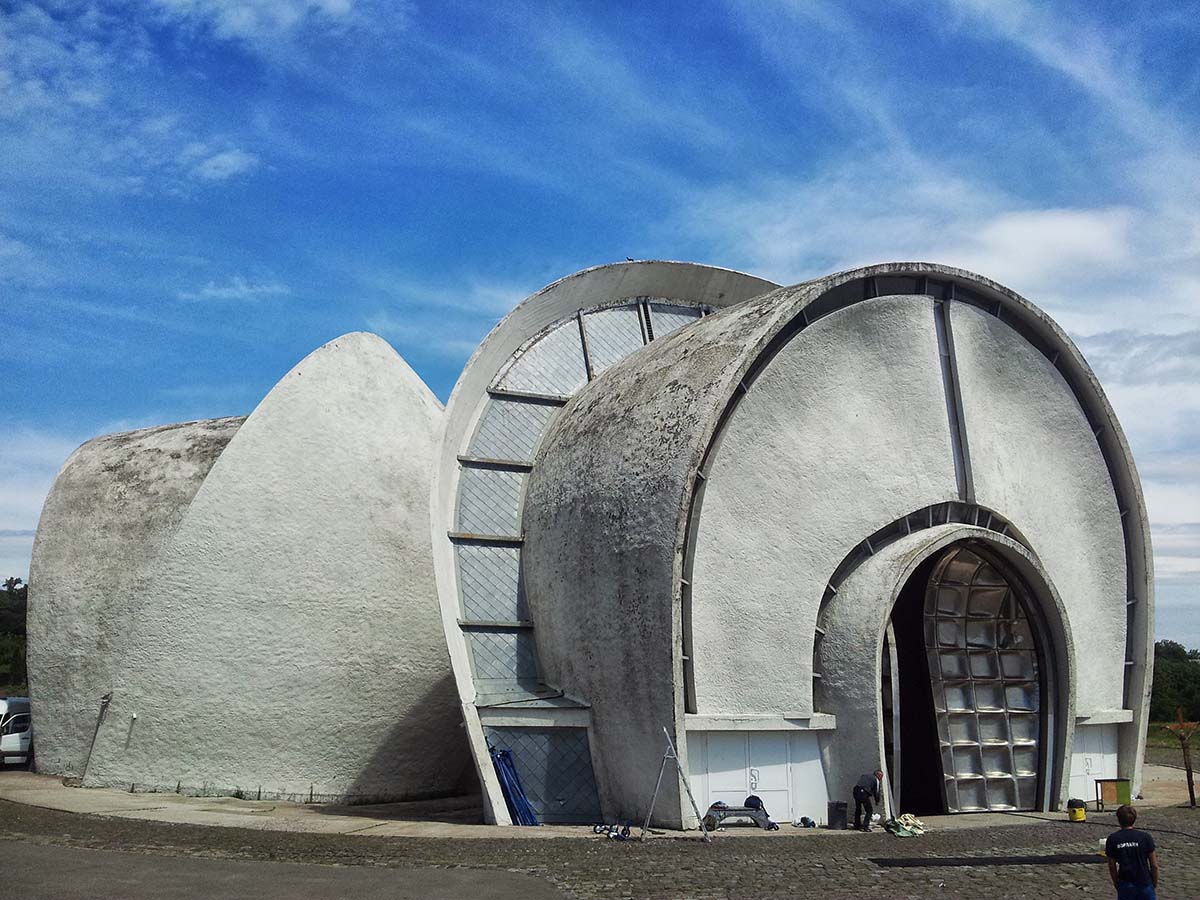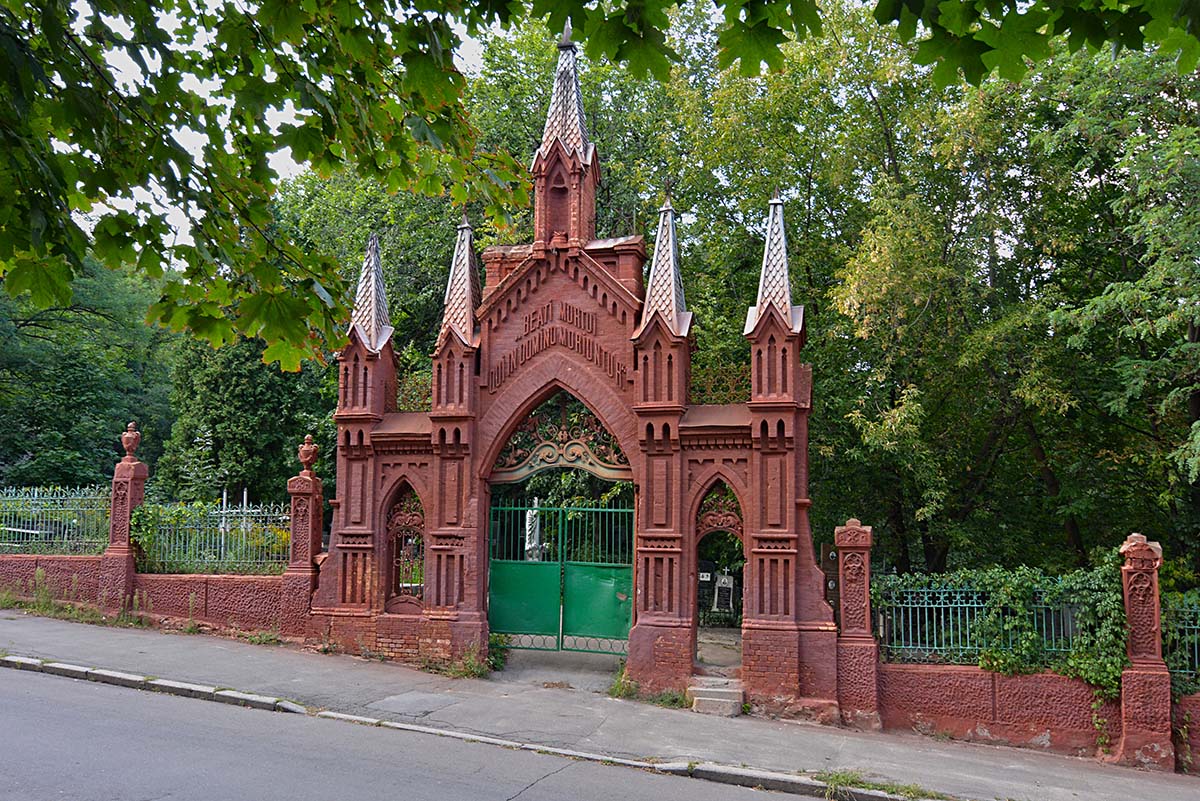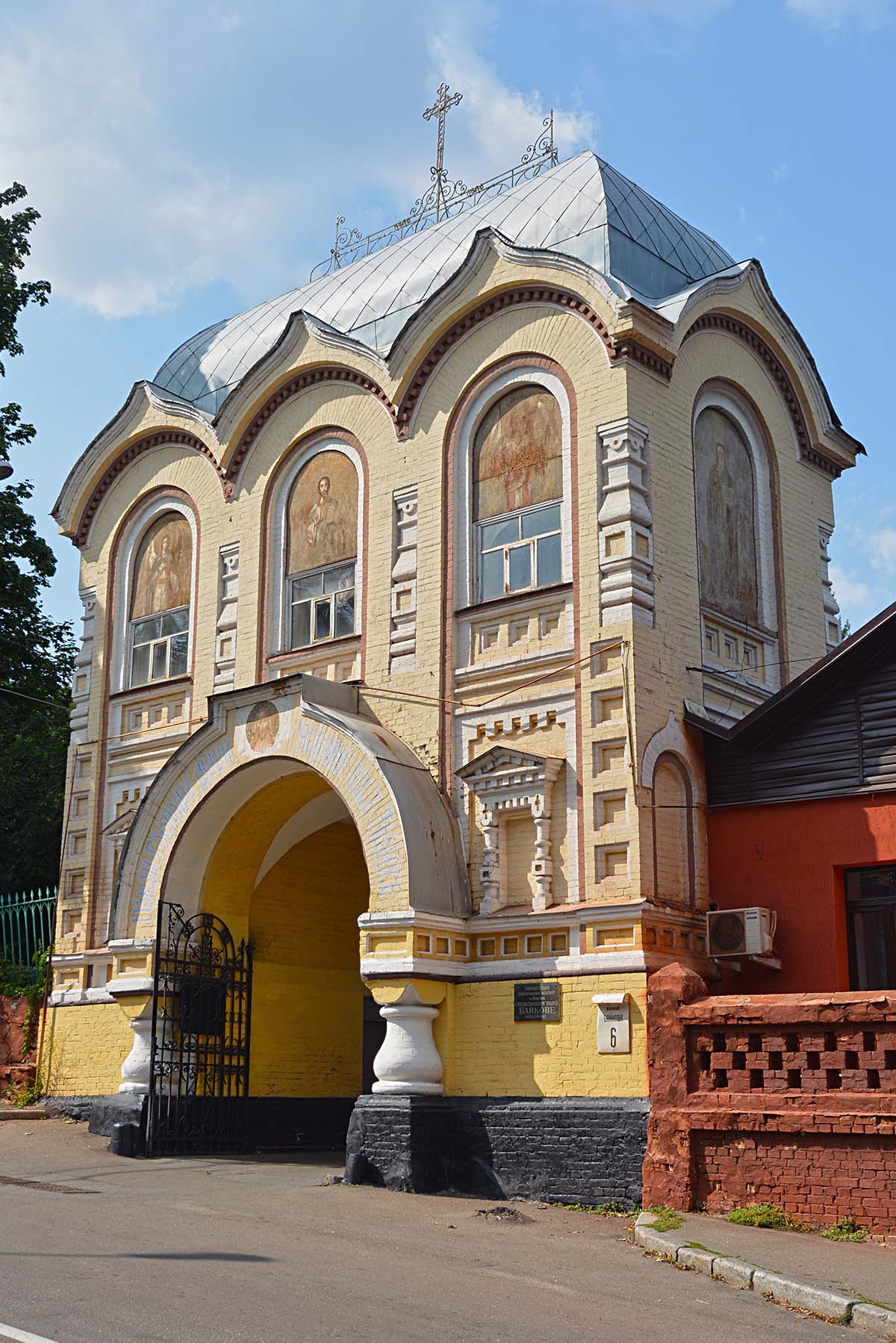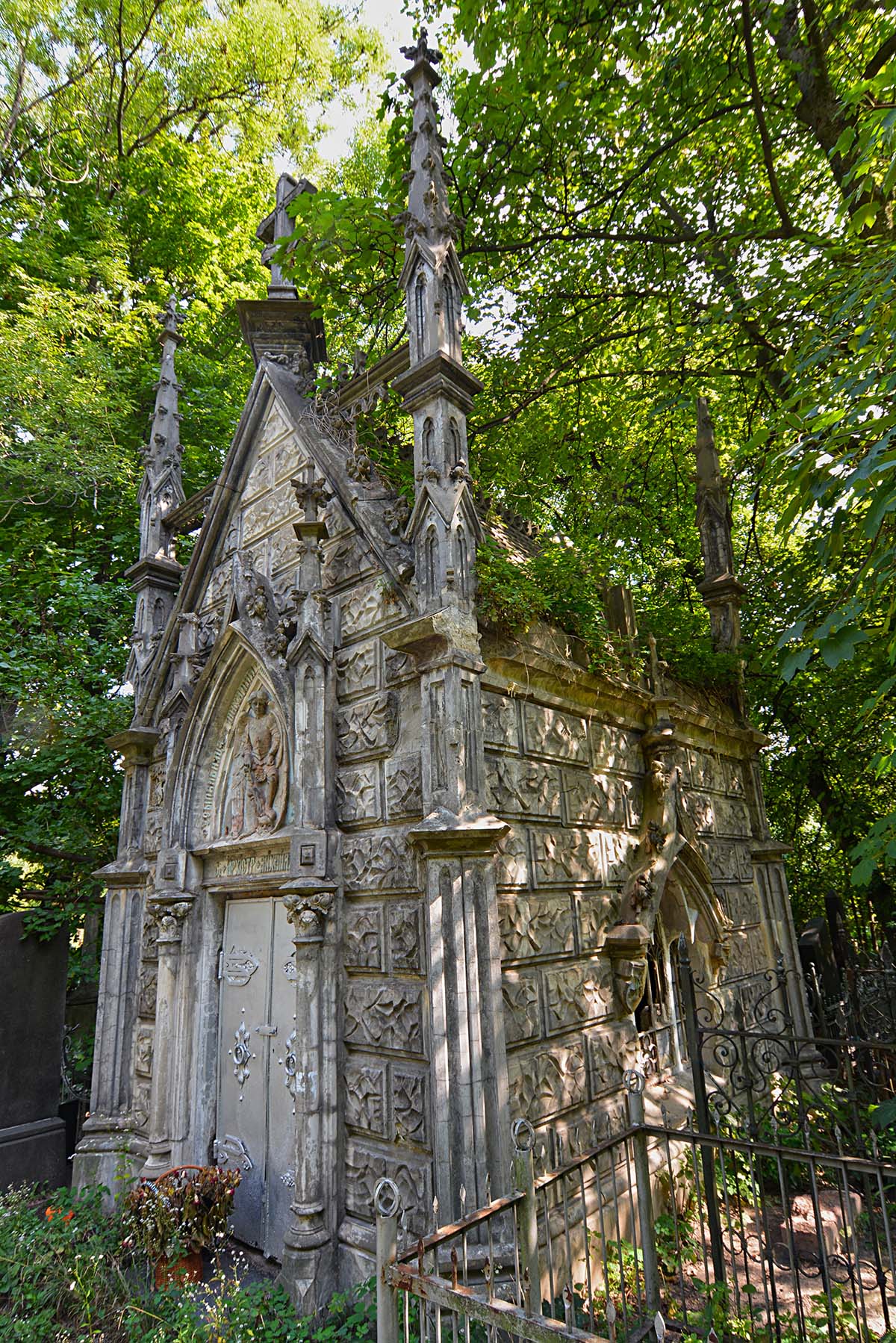Baikovo Cemetery
The cemetery is named after the surname of General Sergei Baykov (Russian military leader, major general, participant in the Napoleonic Wars and the Russian-Turkish War). After the war, he retired and settled in Kiev – he lived in Pechersk in his own house, and across the Lybid River he acquired a farmstead on the outskirts – between the modern Baikovo cemetery and the tract Protasov Yar. This area in Kyiv began to be called Baikov Khutor. The Baikovo cemetery was opened in 1831 with the purpose of burying persons of the Catholic and Lutheran faiths in separate parts. In December 1834, it was allowed to bury Orthodox Christians there. Each part of the cemetery had its own chapel.
The cemetery is divided by Baikovaya Street into two unequal parts. The southern, small part is the Old Baikovo Cemetery (opened in 1831), the northern, large part is the New Baikovo Cemetery (formed in 1880). The new cemetery is surrounded by a stone wall, the entrance gate of which is stylized as a church, cathedral and church. In 1884-1889, a stone Ascension Church was built on its territory (architect Vladimir Nikolaev, who also designed Tereshchenko mansion, Lieberman mansion, National Philharmonic, monument to Bogdan Khmelnitsky). The former Demetrius Church at the Old Cemetery was closed and dismantled in the 1890s; A memorial stone has been preserved on the site of her altar.
On the territory of the Baykov cemetery there are several dozen old crypts. All crypts have varied architecture. They are united only by the internal structure: a small room where people went to commemorate the dead, and a dungeon fenced with bars in which the coffins were located. Many crypts were built by famous architects: V. Gorodetsky, V. Nikolaev, I. Nikolaev and others. All these crypts are unique because they were built according to traditions corresponding to the religions of the dead – Orthodox, Catholic, Lutheran. Most of the inscriptions were destroyed during the Great Patriotic War. During the war, entire families hid in crypts, mostly Jewish families. Later the crypts served as shelters for the homeless. Today the crypts are in a deplorable state; many tombs have been opened and looted.
Famous people who are buried at the Baikovo Cemetery
– Joseph Karakis
– Sidor Kovpak
– Mikhail Grushevsky
– Borislav Brondukov
– Anatoly Dyachenko
– Evgeniy Paton
– Ivan Mykolaichuk
– Igor Pelykh
– Bohdan Stupka
– Nikolay Yakovchenko
– Nikolay Bazhan
– Lesya Ukrainka
– Andrey Malyshko
– Ostap Cherry
– Vladimir Sosyura
– Vasily Stus
– Pavlo Tychyna
– Nikolay Amosov
– Oleg Antonov
– Valery Lobanovsky
– Andrey Gusin
Kiev crematorium
This is the only crematorium in Kyiv, it was built in 1975 next to the Baikovo cemetery. It consists of two ritual halls on the surface, an open area for ceremonies and underground rooms. Abraham Miletsky (known for his works such as Park of Eternal Glory, the crematorium at the Baikovo cemetery, Salyut Hotel, Landscape Alley) and spouses Ada Rybachuk and Vladimir Melnichenko worked on its creation for 13 years – from 1968 to 1981. According to Miletsky’s original project, the crematorium was a purely functional structure, but Rybachuk and Melnichenko (created the infamous Memory Park) rejected this concept and proposed their own – a memorial and ritual complex that would serve as a therapeutic environment for those who have just lost a loved one.
Where is the Baikovo cemetery and crematorium located?
Baykovaya street, 6





